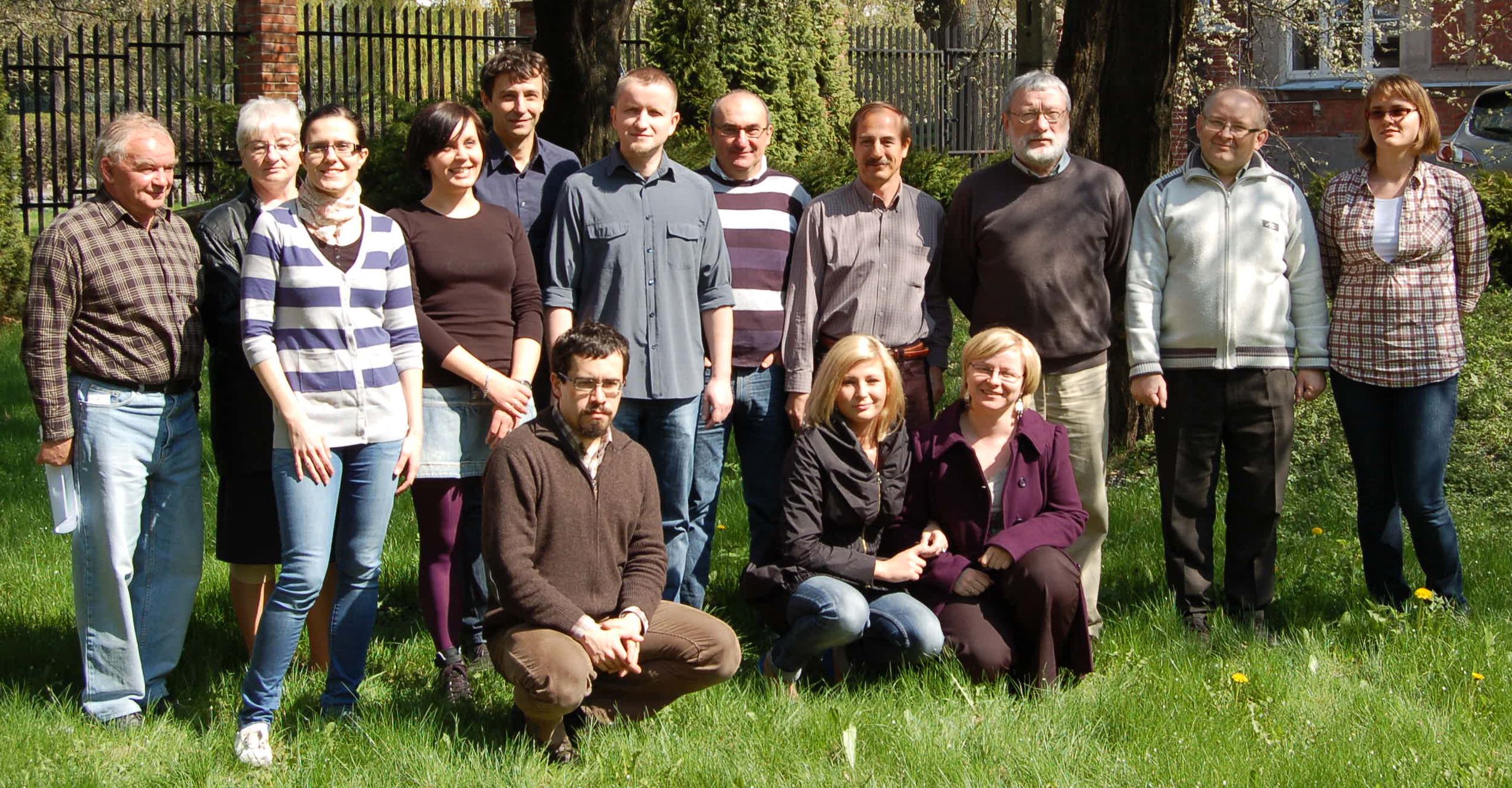
Biodegradable polymeric materials and nanometer scale architecture in polymeric materials are the two main areas of our current research activities. Our attention is focused on the relationships between structure and physical properties, including mechanical, thermal, optical and electrical properties of these materials.
Great attention is paid to the crystal formation at interfaces: preferred orientation and macromolecular chains extending-folding habits, that are of great importance for heterogeneous systems, blends, filled polymers and composites and mechanism of their toughening.
Mathematical modeling and computer simulations are being developed and used for the prediction of the kinetics of supermolecular structure formation as well as for description of macromolecules of complex topologies.
Micromechanisms of plastic deformation, plastic flow and formation of pores and cavities, frequently accompanying deformation, are studied in great detail.This is in order to understand the mechanical behavior of “plastics” and therefore be capable of engineering of their properties. The results of that part of basic research led to a development of new materials with special properties – super toughness and super strength. For instance high-strength polyolefin bars, strong poly(ethylene terephtalate) tapes and thin packaging films with improved barrier properties, nanocomposites based on a range semicrystalline polymers and biodegradable polymers from annually renewable resources were prepared and examined.
Polymer based nanocomposites either containing nanoparticles or composed of nanolayers exhibit strong modification of polymer structure and properties due to highly developed interface and confined volume. The attention is focused on nanocomposites with exfoliated nano-clays, carbon nanotubes, nano-diamond particles and various nanofibers. A new class of materials, all-polymer nanocomposites, is being developed with the aim to reinforce polymers through embedding nanofibers either chemically identical or differing from a polymer matrix.
Superdrawing in shear of single polymer crystals with disentangled macromolecules is studied for the purpose of obtaining polymer nano-fibers and all-polymer nanocomposites.
Foaming of nanocomposites is a new and promising area because fibrous or platelike nanofillers can reinforce significantly walls of foam bubbles leading to extraordinary mechanical properties of those light weight materials. Formulation of foamable nanocomposites and procedures, conditions and protocols of foaming are intensively studied.
Self organization of molecules and supramolecules are studied with the aim of obtaining useful electronic devices. A new method of orienting molecules on a surface so-called “zone casting” was elaborated and used for efficient arrangement of various molecules into structures of high anisotropy. Active electronic elements are being constructed in this way.
Brzezinski, S.; Tracz, A.; Polowinski, S.; Kowalczyk, D.:
Effect of Corona Discharge on the Morphology of Polyester Fiber Top Layer.
Journal of Applied Polymer Science, 2010, 116: 3659-3667.
Zenkiewicz, M.; Richert, J.; Rozanski, A.:
Effect of blow moulding ratio on barrier properties of polylactide nanocomposite films
Polymer Testing 29 (2), 251-257, 2010.
Galeski, A.; Bartczak, Z.; Kazmierczak, T.; Slouf M.:
Morphology of undeformed and deformed polyethylene lamellar crystals.
Polymer, 2010, 51: 5780-5787;
Bartczak, Z.:
Effect of Chain Entanglements on Plastic Deformation Behavior of Ultra-High Molecular Weight Polyethylene.
J.Polym.Sci, Polym. Phys.Ed. 2010, 48: 276-285.
Wang, H.; Keum, J.K.; Hiltner, A.; Baer, E.; Freeman, B.; Rozanski, A.; Galeski, A.:
Confined Crystallization of Polyethylene Oxide in Nanolayer Assemblies.
Science. 2009, 323: 757-760.
Tranchida, D.D.; Bartczak, Z.; Bielinski, D.; Kiflie, Z.; Galeski, A.; Piccarolo S.:
Linking structure and nanomechanical properties via instrumented nanoindentations on well-defined and fine-tuned morphology poly(ethylene).
Polymer, 2009, 50: 1939-1947.
Rozanski, A.; Monasse, B.; Szkudlarek, E.; Pawlak, A.; Piorkowska, E.; Galeski, A.; Haudin J.M.:
Shear-induced crystallization of isotactic polypropylene based nanocomposites with montmorillonite,
European Polymer Journal, 2009, 45: 88-101.
Book chapters:
Z.Bartczak, A.Galeski,
‘Mechanical Properties of Polymer Blends’,
in: Polymer Blends Handbook, 2nd, L.A. Utracki, C.A. Wilkie (eds.), Springer Science+Business Media, Dordrecht 2014, Chapter 13
E.Piorkowska, A.Galeski
‘Overall crystallization kinetics’,
in: ‘Handbook of Polymer Crystallization’, E.Piorkowska, G.C.Rutledge Eds., John Wiley & Sons, Inc., Hoboken NJ, USA, 2013, pp.215-235
Galeski, A.; Regnier, G.:
‘Nano- and Micromechanics of Crystalline Polymers’.
in: ‘Nano and Micro-Mechanics of Polymer Blends and Composites’, J.Karger-Kocsis, S.Fakirov, Eds., Hanser, Munich, 2009, Chapter 1 (pp. 3-58)
Galeski, A.:
‘Strength and Toughness of Crystalline Polymer Systems’,
in: ‘Mechanical Properties of Polymers Based on Nanostructure and Morphology’, G.H. Michler, F.J. Balta-Calleja, Eds., CRC Taylor-Francis, Boca Raton, London, 2005, Chapter 5